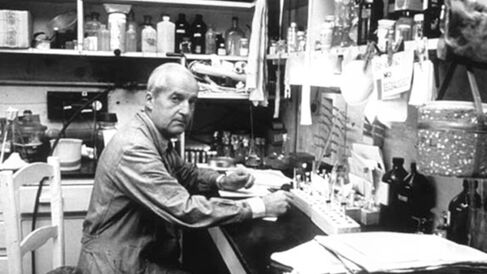Luis Federico Leloir

Nobel Prize in Chemistry 1970 for his discovery of sugar nucleotides and their role in the biosynthesis of carbohydrates.
Department of Biochemistry Postdoctoral Researcher (1936-1937).
Luis Federico Leloir was remarkable even within the ranks of Nobel Prize-winning scientists, most of whom have been honoured for identifying a specific agent or pathway, or for defining a structure or principle. Leloir, however, discovered a completely new class of biological compounds. These are hybrids of nucleotides and sugars that facilitate the synthesis of oligo- and poly-saccharides in all living organisms. For this he received the 1970 Nobel Prize in Chemistry, thereby becoming only the second Argentinian Nobel Laureate in science.
Leloir was born in Paris but his Argentinian parents returned to their homeland when he was two years old. This led to him graduating in medicine from the University of Buenos Aires in 1932 and going on to take a PhD under the supervision of the endocrinologist Bernardo Houssay, whose work led to him sharing the 1947 Nobel Prize in Medicine with Carl and Gerty Cori.
Aware that his grasp of biochemistry was inadequate for the direction in which his scientific curiosity was taking him, Leloir then spent a year in the Biochemical Laboratory in Cambridge under the overall direction of Frederick Gowland Hopkins but working in particular with Malcolm Dixon on enzymology. At that time Dixon was examining the effects of cyanide and pyrophosphate on succinic dehydrogenase and their interaction led Leloir into carbohydrate metabolism.
Having returned to Buenos Aires, Leloir, together with his colleagues, showed that sugar nucleotides were fundamental to the metabolism of carbohydrates. An early discovery revealed that galactosemia arises from the absence of the galactose-1-phosphate uridylyltransferase (GALT) enzyme, preventing ingested galactose from being converted to glucose.
Scores of sugar-linked nucleotides have now been identified on the foundations of the work of Leloir that led to him receiving the Nobel Prize.
